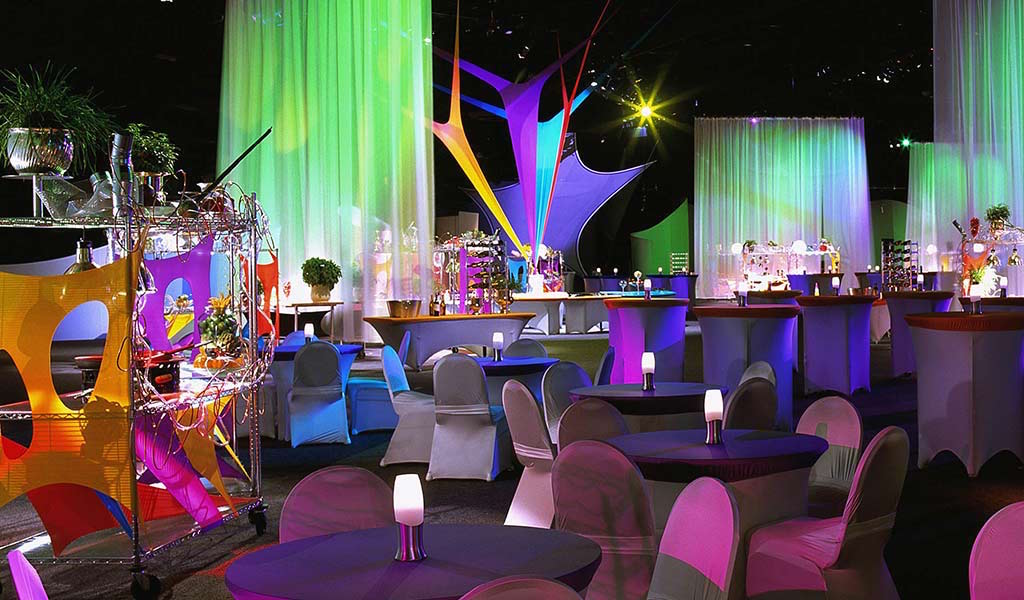Skift Take
Meeting planners are asking hotels with large convention space to prove the quality of the Wi-Fi before signing any contracts. They're also willing to pay for solid Wi-Fi versus always asking for comp'd service.
There is a certain amount of foreboding in the meetings and conventions industry around the future of Wi-Fi connectivity, or more specifically, the quality of connectivity.
It goes without saying that people are sucking up more bandwidth at hotel and convention centers year-over-year as more attendees bring more devices to large events. Tablets, for instance, can use up to three to four times more bandwidth than a phone.
But that’s really only the tip of the iceberg.
Video watching on mobile is looming big time. According to the worldwide IAB Original Digital Video Consumer Study in April, 35% of respondents on average worldwide report watching more video on their phones versus last year. That number jumps higher in the U.S. (50%), Canada (42%), and the U.K. (40%).
Additionally, the Internet of Things is going to explode in 2016 with a 30% rise expected in the number of connected objects impacting our daily lives, according to the Gartner IT company. Those objects can range anywhere from small iBeacons to large robots.
Meaning, the demand for bandwidth is nowhere near close to reaching maturity.
“A couple years ago, meeting planners just asked if you had Wi-Fi, whereas now they want to know what kind of Wi-Fi you have,” says Gino Marasco, director of sales & marketing for Walt Disney World Swan & Dolphin in Orlando. “The technical aspects have become key for corporate meeting planners who, say, have a simulcast general session where the Wi-FI has to be 100%.”
He adds that it’s customary now for planners to bring third-party companies with them on site inspections to verify Wi-Fi capacity. Their organization’s CIO or IT specialist are also often meeting with the Swan’s IT team.
“It’s also much more about price per value now,” says Marasco. “It’s not about comps anymore. Planners are willing to pay for Wi-Fi as long as it’s good.”
The 2,267-room Swan & Dolphin finished a Wi-Fi upgrade in October throughout its 329,000 square feet of meeting space. Las Vegas-based XpoNet is the internet services provider, which specializes in hospitality and tourism.
According to Gabriel Gilligan, SVP, global operations & business development at XpoNet, there are two things required for reliable Wi-Fi.
First, you need “fat pipes” providing high bandwidth coming into the property. So the Swan, for example, has two 1-gigabit redundant pipes provided by two different telecom companies, CenturyLink and SmartCities.
“It’s important to understand that those are redundant to back each other up, so it’s like if you go to McDonald’s and it closes at 10, Wendy’s is open across the street,” says Gilligan. “If one pipe goes down, the other can cover it.”
The 2-gig Wi-Fi system is on the high side for large convention hotels that have that much bandwidth for the entire property. Sensing demand growth far into the future, the Orlando hotel dedicated two gigabits solely for the meeting space.
To put that in perspective, Gilligan said XpoNet has one meeting in Las Vegas for 15,000 attendees serviced by a 700,000-megabit Wi-Fi system that isn’t stretched to capacity.
The second requirement for “high density” Wi-Fi is a high volume of access points using the latest five gigahertz 802.11ac standard technology. So at the Swan ballrooms and prefunction spaces, the number of access points was doubled, with 58 now installed in the largest ballroom.
Big spaces, such as ballrooms, and small spaces where a lot of people congregate closely together, like prefunction areas, are the two scenarios that cause the most headaches for internet providers
Gilligan explains that the newest Cisco 802.11ac IEEE technology developed in late 2013 allows providers to use a “flashlight model” to aim Wi-Fi at specific, narrowly defined areas within a public space. Those bandwidth streams are spread across different Wi-Fi channels to negate data bottlenecks, which was typical for older technology.
What’s Next
Looking ahead, the next Wi-Fi evolution in development is the 802.11ac “Wave 2” standard that uses Multi-User Multiple-Input Multiple-Output (MU-MIMO) technology. The new MIMO devices coming onstream within the next few years will operate at speeds up to a potential 9.6Gbps, compared to 1.3Gbps now.
“With new MIMO technology, it just means we’ll be able to send multiple streams to multiple people at the same time,” says Gilligan, explaining that the new standards are designed to communicate with the older systems in place. He adds that the MIMO tech is “still a ways out there.”
The big challenge on the horizon, however, is the rise of the Internet of Things. Nobody is exactly sure how the exponential increase in devices will impact Wi-FI usage.
“The Internet of Things is a total other beast,” Gilligan told us. “We will have to manage that effectively, so do we isolate them on their own channel, or isolate them on their own SSID, which is a unique identifier? So, IoT is going to need to be managed, but it’s not a concern right now.”
Subscribe to the Skift MeetingsIQ newsletter for strategies disrupting the meetings and events industry.
Have a confidential tip for Skift? Get in touch
Tags: meetings, orlando, wi-fi
Photo credit: Convention hotels are under serious pressure to boost Wi-Fi capability in their function space. Walt Disney World Swan & Dolphin
